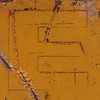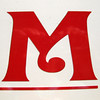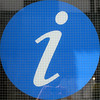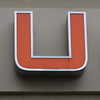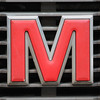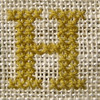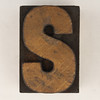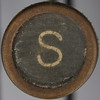Travel Timeline Remix
I used this Xtimeline tool because I wanted to try a timeline tool out from Alan Levine’s list and I wanted to create a timeline progression of my information and images provided under the Creative Commons copyright from Flickr (the remix part) of a vacation to England and Wales over a three week timespan to show where I was on each day – it was a very busy trip! I think this tool works reasonably well, however, it did not want to have more than one item for a single day regardless if there were different times of the day for each item (how frustrating). It worked fairly simply and easily, but had some foibles such as the multiple items on the same day issue which was irritating. This also made me much more selective with the images that I used, as my plan was to have multiple images for each day perhaps this is a good thing though too as it does make the timeline too specific. Some good components about Xtimeline was that it had a built-in keyword tool and a location for the image / text source citation which was a nice touch. There are also some interesting tools to import / export the timeline as a CSV (comma delimited file) or XML (extensible markup language file), so you could built it outside of Xtimeline and then bring it in or out. Hope you enjoy the presentation!
http://www.xtimeline.com/timeline/My-Favourite-Vacation–Traveling-Around-England—Wales
November 16, 2009 6 Comments
Photo Remix
I had a ton of fun with this activity. I used dumpr.net to remix this photo of my son. I have to admit, it was an easy task, but I spent TONS of time deciding on the best image to use and what filter to apply. I have done a few others that I will print out for my kids so they can colour themselves. Enjoy!

Get your own photo sketch
November 16, 2009 1 Comment
Commentary #2 Literacies and Information Architecture
Mandala Making Activity——-
—–As a preface activity to the commentary I would like to invite classmates to review an online example, or generate their own Mandala of Muliliteracy as a way to conceptualize the organization of each individual’s concepts. Feel free to peruse the http://win-dev.communication.utexas.edu/mandala/ communication course website and check out a sampling of other ones on the site.
The Dobson and Willinsky article provides a broad scan of the many meanings of digital literacy, for which they consider technological literacy to be a synonym (p 15, 2009). The paper asks us to focus also on the impact that digital literacy will have socio-culturally. This article served as a springboard to explore the theme here that information architecture skills are integral to successful learning. This would correlate with a structural meaning-making context, after Cope & Kalantzis (p 11, 2009)
The authors make the distinction between traditional literacy and new literacy—they encourage us to view literacy as a social practice, not an individual skill (page 15, 2009). Digital literacy is a presented as a subset of information literacy. The 1989 definition of information literacy (page 18, 2009) cited from the American Library Association is as follows “To be information literate, a person must be able to recognize when information is needed, and have the ability to locate, evaluate, and use effectively the needed information”. Learning to learn is a saying often applied to describe general information literacy.
Matthews-DeNatale (2009) believes “There are at least three pieces to the puzzle. One piece is information technology fluency, one is information literacy, and another piece is media literacy. And they’re all overlapping, like a Venn diagram.” Information management is a part of multiliteracy skills, and will be the focus of this report.
Dobson and WIllinsky also cite earlier work (p 16, 2009) by Dobson (2005) in which he proposes “Digital literacy, therefore, assumes visual literacy and entails both the ability to comprehend what is represented and the ability to comprehend the internal logics and encoding schemes of that representation”. This definition implies that one needs to understand the structure behind the information directly accessed in the media, and so associated with every representation of “data” is metadata.
With projects such as Project Gutenberg, Million Book Project, Google and others the authors refer to (p 17, 2009) today’s student has access to millions of references, and information in multiple media around each subject they may wish to explore.
Dobson and Willinsky propose that accessing multiple nodes between the links in a highly associative environment can be disorienting to a learner (page 7, 2009). This best applies to learners transitioning from traditional learning environments, not to Digital Natives. The authors do clarify that a person with good resident domain knowledge will do better in a high network situation, as they can more easily integrate situational information from this environment with their schemata (page 8, 2009).
Managing information in a digital environment is changing learning both in and out of the classroom. Bookmarking has surfaced as a key way to manage large sets of links on the desktop. Del.icio.us is a perfect example of how an individual can scaffold his or her learning by gradually building up more and deeper resources as understanding of a subject increases. This software allows sharing of bookmarks to further enhance functionality. This sort of tool is good example of the way that digital literacy skills can transform research, which used to be a singular activity, done in libraries’ book stack and index searches, into a highly social activity with potential for many people at great distance and of varying ages and cultural backgrounds to contribute to the process. According to Dede (2008) “RSS feeds, sophisticated search engines, and similar harvesting tools help individuals find the needles they care about in a huge haystack of resources”.
The authors refer to the fact that the unit of importance is now the post, not the page (page 20, 2009). This means that more threads and small packets of information must be managed now that microcontent is king. Behind microcontent is the web of user tags that add another dimension to the material. These linking tags allow pooling of learner knowledge of the data, by the process of cumulative novel associations.
The old way of filing and accessing material was hierarchical and taxonomic. Current information management in multiliterate learners often revolves around folksonomy (Neil, after Vander Wal, 2007). Folskonomy is defined on the EDUCAUSE website as the application of user-defined tags (so-called folk classifications) by an open group of people to categorize units of information ([n.d]). By adding tags to visual or other data in their work, learners can make powerful associative links, and even generate tag clouds, to conceivably make new meaning over and above the data itself. Folksonomy structures such as at Digg, CiteULike and others, provide a new way to manage content. New tools allow one to make a visual representation of the metadata. Generating information architecture over and above the base information is a widespread user-generated experience for the first time in history.
The ability to customize the desktop and files within a personal digital appliance is another way that information literacy skills can enhance learning. Personal Learning Environments (PLEs) provide powerful information structuring, which provides opportunity for deeply customized user-directed learning. PLEs can provide a way for the user to select only those modes of learning and manage information as is best suited to their learning style(s).
Informal learning environments such as games such as SimCity, and social networks (Flickr, Facebook, YouTube) also provide a new way to make meaning by providing situated learning and constructivist experiences. By accessing a path to a level of information which is appropriately in the zone of the student’s development, the comfort of the learner will be enhanced. On YouthVoices for example, young learners share their media together and have online discussions around those materials in a comfortable self-selected sharing environment.
Dobson and Willinsky acknowledge the challenges facing today’s learners when they say “And there are very real issues around too much information, in the form of inundated mailboxes clogged with spam and a World Wide Web that can seem at times overwhelmingly wide, if less than very deep”. (p 22, 2009). If educators are cognizant of the power of information architecture as a component of multiliteracy, then optimizing teaching around this strategy will help the learner focus effectively on both their individual and collaborative learning.
Unorthodox and novel strategies will continue to evolve as software evolves. Google Wave is a high priority research tool for that company because it integrates many multiliteracy tools in one place for streamlined sharing and organizing of information. This is an excellent example of how tools are evolving quickly to come to the aid of web 2.0 users in integration of information architecture. Draude (2009) feels educators should answer the question “Maybe we should look at how to help a student figure out what is the priority information—not what information does the student have to know, but what information can the student go find that will supplement what he or she knows? Dobson and Willinsky (2009) cite a similar theme from a 1989 work by Lemeke regarding students learning independently, using metamedia and information literacy; they quote Lemeke saying”…places the emphasis on “access to information, rather than the imposition of learning”. Draude and Lemeke’s statements certainly represent a new appreciation of just how important information architecture is.
References
Cope, B. & Kalantzis, M. (2009) ‘Multiliteracies’: New literacies, new learning. e-published March 17, 2009; Accessed online November 5, 2009 at: http://newlearningonline.com/~newlearn/wp-content/uploads/2009/03/m-litspaper13apr08.pdf
Dede, C. (2008). A seismic shift in epistemology. EDUCAUSE REVIEW, Vol. 43, No. 3. Pp 80-81. Accesssed online November 15, 2009 at: http://www.educause.edu/EDUCAUSE+Review/EDUCAUSEReviewMagazineVolume43/ASeismicShiftinEpistemology/162892
Dobson, T., Willinsky, J. (2009). Digital literacy. Cambridge Handbook on Literacy. Accessed online at: http://pkp.sfu.ca/files/Digital%20Literacy.pdf
EDUCAUSE. Folksonomies [n.d]. Accessed online November 15th at: http://www.educause.edu/Resources/Browse/Folksonomies/30459
Neal, D. (2007). Folksonomies and Image Tagging: Seeing the Future? ASIS&T Bulletin. Accessed November 15, 2009 online at: www.asis.org/Bulletin/Oct-07/neal.html
Schaeffer, S., Fry, M., Droude, B., Matthews-DeNatale, G. (2009) Information literacy and IT fluency. EDUCAUSE REVIEW Vol. 44, No. 3 pp 8-9. EDUCAUSE Learning Initiative (ELI) Annual Conference podcast at: <http://www.educause.edu/NewTechPodcast>.Under Creative Commons License3.0
Websites Referred to:
Youth Voices http://youthvoices.net/legg/
SimCity http://simcitysocieties.ea.com/index.php
digg http://.digg.com
Flickr http://www.flickr.com
citeulike http://www.CiteULike.org
facebook http://www.facebook.com
Google Wave http://wave.google.com/help/wave/about.html
November 16, 2009 1 Comment
Rip.Mix.Feed using PhotoPeach
I chose to document my hiking trip to Torres del Paine, Chile for this assignment in PhotoPeach: http://photopeach.com/album/nu40ux. My husband Mark and I travelled there in December 2004 and completed a 65 Km hike that was a really amazing journey! I chose PhotoPeach because I had used it before in my last MET course and liked how it allowed me to add captions, select music to go along with the photos, and I liked how the photos sort of dance on the screen. I also liked the fact that I could tailor the speed of the slide show to ensure that it wasn’t too slow and would be over before the music finished.
I chose the song “Gold in them Hills” to accompany the photos because the lyrics speak of the importance of appreciating all things in our lives even when life is getting us down and being hopeful too. There were days during the hike when it was a tough slog, but I kept on going and felt very inspired by the beauty of the scenery. Also, on the last day of the hike, we got very close to the “Torres”, the steep granitic towers which made the hike even more worthwhile. They really were the “gold in them hills”.
November 16, 2009 3 Comments
Heavy Heroes: More than just memorable
The Cultural and Psychological Roles of Heroic ‘Heavy’ figures and of the Bizarre in Ancient Mythology: More than just memorable
Walter Ong asserts, in his discussion [pp 69 -71] that the heroic tradition [meaning the great works of Homer (the Iliad, the Odyssey et al)] and the great pantheon of gods of ancient mythology, specifically that of the Greeks, was an outcome of the inherent characteristics of “primary” oral culture and of early literate culture. According to this interpretation of the attributes of oral culture, oral residues include a necessary structural mnemonic component in terms of what is included in works of poetry and literature. Ong states that these works include what he has termed “…type figures, wise Nestor, furious Achilles, clever Odysseys….” that is, that these figures constitute typologies. (Ong, 2000 pp 69). It will be shown in this discussion that, these ancient works do indeed present specific “types” but that their appearance function primarily as expressions of cultural values and psychological types, which has very little to do with mnemonics.
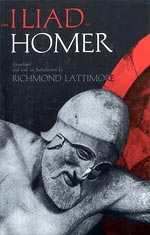 A culture of War [1]
A culture of War [1]
It will be shown that these stories arose out of an evolutionary meshing of critical points of juncture, framing a “space” where personal & psychological history and cultural values and mythology complexly intersect. It will be demonstrated that it is not the needs of an orality based culture but the language of the Unconscious and the needs of a military based culture, that provided the impetus for the creation of the bizarre psychological types and “heavy” dramas that are portrayed in these works.

More than just a clever ruse: An ancient psychodrama [2]
The connection between psychoanalytic theory [especially Freudian and Jungian] and literature [especially ancient classical mythology] is intimate and complex, indeed among the honours Freud received in his lifetime, was the prestigious Goethe Prize for Literature (Nelson, 1963). In Freudian psychology, many of the fundamental concepts, [for example parapraxis, dreams, symptoms] have direct analogies within literary theory. Specific psychoanalytic constructs constitute a sort of involuntary language, with its own laws and logic, which serve to define and describe the operation and nature of the Unconscious, within the Freudian concept of the psyche [Orlando 1978].
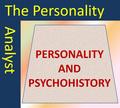 Personality and History fuse together in Psychoanalysis [3]
Personality and History fuse together in Psychoanalysis [3]
Mythology and mythological analogies are fundamental and integral to the central theoretical construct of Freudian psychological theory; the Oedipus Complex, which is based upon Sophocles Oedipus Tyrannus {Morford & Lenardon, 1991]. It would be dismissive of the entire field of psycho-analysis [and of much “talk therapy”] to conclude that the roots of the frequently bizarre and strange characters from these ancient stories is driven by the need to make them memorable in the sense of easier to recall, rather than by a fusion of complex psychological and cultural values, needs and characteristics.
It has been suggested that the Iliad reveals not just the attributes and characteristics of the Heroes and the gods of the mythological world but also serves to illuminate many aspects of features of Homeric and Classical Greek culture, providing insight into the ways that the Greeks viewed or perceived themselves and their society (Armstrong, 1993).

A cast of characters expressing psychological types and cultural values [4]
In terms of values or ethics, it is clear that within the mythical world of the Iliad, human beings are continually and dramatically playing out their predestined roles within specific well-constructed constraints, which are imposed upon their agency or range of actions, by the gods. Human beings are controlled by and subservient to, various levels or hierarchies of power [both divine and human] and domination.
Not surprisingly, in a world defined by graduations or degrees of tyranny [with the great warring kingdoms as political models], and within a story chiefly concerned with the consequences of war, the virtues [or passions] manifest in the Heroes of the Iliad [Achilles, Hector, Priam] are those that fit a military paradigm of ‘greatness’. Thus, martial values are asserted, among them, two extremely praised attributes are those embodied in the concepts of “Honour” and “Glory” defined within a specific set of military values and ethics [sic] of Greek military, partriarchical, tyranny based culture.
In summary, the story of the Iliad is clearly concerned with asserting the validity of the ‘honour culture’, which the Greeks held in such high esteem though the actions and examples of both gods and men. The power relationships between man and the divine are interactionist, that is, the same passions and character flaws plague both the Heroes and the deities. The gods participate in aspects of humanity and the Heroes participate in aspects of the divine in a complex and dialectical fashion. Nowhere in all of this, whether in terms of cultural values or in terms of psychological needs, does the role of mnemonics figure as having primacy.
 Achilles: A Postmodernist Hero? [5]
Achilles: A Postmodernist Hero? [5]
Ong asserts the notion that mnemonics, and the needs of orality [as though it was in itself an entity] or of an oral based culture, are more important than the cultural values or psychological forces at play here. Ong states “…. all of this not to deny that other forces beside mere mnemonic serviceability produce figures and groupings….” and that “…psychoanalytic theory can explain a great many of these forces…”. Clearly, psychoanalytic theory and cultural forces explain the vast majority of factors at work, and mnemonic structure [like the well documented use of repetition of phrases and of whole scenarios] was a secondary, even minor attribute to these great works. The critical or primary function of these works was to support or validate cultural beliefs [representing specific values] and to express the language of the unconscious [through the representation of universal attributes] as it functions within the human psyche.
The importance of the universality of some of these values, the cultural specificity of others, and the deep psychological underpinnings of these characters and their behaviors, can be dismissed if taken at surface value. However, such surface interpretations can be misleading. These stories portray humans as being at the mercy of, or aided by, divine powers, with questions about mortality and morality often left unanswered. Indeed the great questions posed in stories like the Iliad are not resolved, and seemed shrouded forever in ambiguity.
For me these stories resonate well in our highly technical and highly literate society, even these thousands of years after they were passed down to us. These works are not merely bizarre stories from the past, made easier to remember because of their strange set of characters. Ambiguity itself is asserted within them [a very post modern concept] and functions as a sort of mythic signifier or semiotic sign, of those realities that constitute the significant and universal components of the human experience and of what it means to be human.
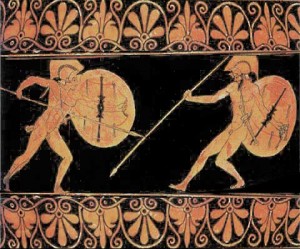
An eternal conflict plays out in the human psyche as well as the battlefield [6]
November 16, 2009 2 Comments
I had to try this one too!
November 16, 2009 1 Comment
Commentary # 2 : Curiosity Killed the Cat !

Bolter in his book explains about devices of navigation and orientation throughout the history of writing, from the evolution of hypermedia (from ancient oral poetry) to how it is informed by critical theory and shapes writing. He considers writing spaces as spaces that include both written products and types of written production, including illuminated texts, printed books, web pages, typewriters, and word processors. He analyzes changing nature of print, and of writing spaces as they become more visual even in electronic writing, digital writing, hypertext and hypermedia. He considers that, text becomes a textual aid that brings order and unity to the images. According to Bolter hypermedia can be regarded as a kind of picture writing, which refashions the qualities of both traditional picture writing and phonetic writing (p. 58).
However, through those chapters that I have read till now, I feel a soft deterministic way of approaching to technology by Bolter. Although throughout the book and even at the preface, he tries to explain about it, but from time to time, a continuing of Ong’s technological determinism (that was discussed previously in “From Orality to Literacy”) can also be traced in Writing Space.
In general, Bolter believes that the technical and cultural aspects of writing are so closely tied together that it is impossible to separate them and they both combined the technology. He sees technology and culture as two things that influence and create each other. Bolter does not reject the benefits and advantages that technology provides, but reminds that users share equal responsibility for the achievements. In this way, he tries to distance from technological determinism.
My curiosity to find possible influences of Ong and others on Bolter’s soft determinism, led me to search for the refernces of Writing Space at the end of the book. I was surprized when I found chapter 11, “The Web Site” just before the references. It was only one page. In that chapter, Bolter explains that a Web site, is often to provide ancillary material that the book omitted due to limitations of space or the limitations of the printed medium itself. Perhaps the main reason for having a Web site is simply to extend the reach of the text, to establish a colony in the new territory of cyberspace (p. 214). The URL address of the associated Web site of Bolter’s book is http://www.lcc.gatech.edu/~bolter/writingspace/
I was so curious to have a look at it and find what Bolter considers as an extension, and a remediation, of the printed text, containing additional information, corrections, and improvements. As Bolter says “It (Web site) also remediates the printed text by making a modest claim to interactivity, in the sense that visitors to the site can register comments and criticisms, which will be recorded and made available to subsequent visitors”. However the link didn’t work. I tried it again and again but I faced with the same message, “The requested URL was not found on this server”. I searched for the server and found it to be located in Georgia Institute of Technology. Bolter’s academic homepage is also available in that server and it works!
It was surprising for me that a writer be aware of reading his book by students in different universities and is reluctant to update the web address of his book, especially when considering web technologies as a remediation of printed text. I continued my search to find the original URL address that aimed to associate Bolter’s book. However, during my search, I was surprised by an article in Computers and Composition Journal in 2002, a year after the print of the new version of the book. In that article Barton, from the University of South Florida, stated that “the web site advertised in his (Bolter’s) last chapter was not functional at the time of this writing”. According to his harsh criticism “Perhaps this could be a reason for so many scholars preferring print. Another reason for this preference might be to achieve the notoriety that scholars like Bolter acquire when they publish books! If Bolter had produced a web page instead of a book, would I be reviewing him now in a scholarly (print) journal? I wish that Bolter had addressed these perplexing ironies” (Barton, 2002). However, I agree with Barton that such ironies can not reduce the effectiveness of Bolter’s Writing Space.
Now, in spite of Bolter’s emphasize on the dynamic and heterogeneous visual experience that the Web offers, I feel that the link of the book’s Web site has never worked for all of these years. I could imagine that by adding a website for his book, Bolter would critically analyze and show the changing structure of writing spaces by looking at the evolution of writing and spaces of writing. Bolter’s use of Web, as technology that promises the future, was a big disappointment for me.
In the recent years due to dynamic characteristic of Web, maybe Bolter has felt that it is not still necessary to defend the idea of electronic writing in practice, in the form of a Web site, as significant, since it is no longer the case. Today’s culture is far more wired and open to Web and Web-based communication that it probably be more important to try to understand the importance of Web as new writing technology in teaching and learning.
Let me finish up here with a beautiful saying from Rumi, written 800 years ago.
“Either exist as you are, or be as you look”
References
Barton, M. D. (2002). Book review, Computers and Composition, (2002). 499–502.
Bolter, D. J. (2001).Writing Space Computers, Hypertext, and the Remediation of Print. New Jersey: Lawrence Erlbalm Associates.
November 16, 2009 3 Comments
Rip/Mix/Feed
First of all, this activity is really FUN! Just following the links suggested on the Rip/Feed/Mix wiki page had me totally involved and entertained for over two hours. I’m a big fan of http://cogdogroo.wikispaces.com and I was initially going to do this activity with Roxio Photo Story. However, I used that tool in my own wiki posting for 540, and I thought I’d try a new one.
I wandered over to http://search.creativecommons.org/ and somehow found a link to http://bighugelabs.com/ and once there, Mosaic Maker seemed perfect. I had to create a free account, which is tied in to my Yahoo account, which is then tied in to Flickr. Interesting path of convergence on Web 2.0! There was an option to sign up using Facebook, but I thought Yahoo was more secure. Using Mosaic Maker, I linked to Flickr and searched Creative Commons images that were free to adapt, remix and reuse. I wanted to make a mosaic that reflected the computeras a communication tool. I saved the images in my Flickr favourites, and then Mosaic Maker searched my Flickr favourites to create the mosaic. Pretty simple, yet highly networked!
BigHugeLabs encouraged me to include the html code from the images, in order to give credit to the people who uploaded to Flickr. Here are the references automatically created by Mosaic Maker:
1. Informatics 2005/2006 Creative Commons photo-patchwork, 2. Computer History Museum, 3. Silicon Gallies – Next Generation Glass Tile Pendant – Black Laptop Computer Key – CTRL ALT DELETE Necklace, 4. Computer Testing, 5. die computer die 2.22.07, 6. Computers, B&W, 7. Build Your Own Z80 Computer, 8. Predicting the Computer of 2004 in 1954, 9. Apple: Keep Your Lawyers Off My Computer, 10. Computer History Museum, 11. Computer Graveyard, 12. Controlling a Computer with Eyes
November 16, 2009 No Comments
Commentary #2: The Fragmentation of Print
Bolter argues that hypertext is remediating print forms, offering a dichotomous view separating print from hypertext, separated on the basis of links and imagery and arguing the benefits of imagery will supersede print. Will hypertext overwrite print due to inherent qualities such as flexibility and relation to natural ways of processing ideas which cross cultural and linguistic lines? The reader is forced to consider which form will become dominant, print or imagery:
“Although the writer and reader may use words to describe and interpret the pictoral message, two readers of different languages could share the same system of picture writing.” (Bolter, 2001, 59)
While he questions the effectiveness of voiceless picture writing on its own, he purports that through hypermedia we realize “a kind of picture writing, which refashions the qualities of both traditional picture writing and phonetic writing.” (58)
Bolter argues that hypermedia and eBooks offer increased flexibility to printed books in that they do not align themselves end to end on a shelf, rather “merging into the network of the World Wide Web, the electronic book invite exploration as part of a network of texts.” (81) Bolter asserts that books must be complete units in themselves, and despite their physical proximity to other books, they become completely separate once placed on a library shelf. While the idea of linking books, texts and images is interesting I question the value of this approach for all types of literature.
The issue Bolter has failed to address to this point is the reasonable applicability of image and link based hypermedia to all forms of text. Hypertext emulates magazines and newspapers in its marriage of images to text, offering unparalleled means to further exploration of ideas and concepts through linking nodes of information that allow the reader to follow paths of links through endless pages on the World Wide Web. In encyclopedic form, hypertext offers a flexibility for the reader to explore subjects according to personal interest and in relatively effortless ways as were required in former volume-based, shelved books while images allow readers to appreciate context with less apparent description. This form of hypertext, however, is not necessarily the ultimate solution to all forms of text. Qualitatively, the text offered in such forms as magazines, newspapers, and encyclopedias differs greatly from that of prose text found in fiction.
Focusing on hypertext, this form does offer increased reader control through their organization of ideas “that can arrange themselves into a kaleidoscope of hierarchical and associative patterns-each pattern meeting the needs of one class of readers on one occasion,” (Bolter, 2001, 91) this encyclopedic example ignores the needs inherent to the narrative form. Current novels are written in a linear and arguably male organization of linear storylines, building tension, climax and denouement. The novel form favours author centred and directed, linear exploration of print while hypertext offers reader centred, open, non-linear exploration of links which span infinite pages and represent a multitude of variations of ways to explore the same available material.
Does hypertext, which indeed offers possibilities for certain forms of text that seem to represent an extension of inherent qualities of the texts themselves, offer the best solution for all texts? The narrative form favours a closed author centred approach to reading and exploring text. Would hypertext, despite all its possibilities, fit in with the demands of the narrative form? Readers explore such texts as novels by following the direction of the author. Rather than viewing this as a negative aspect of linear based fiction, it seems more reasonable to appreciate the unique forms and qualities of various texts which arguably determine their effectiveness in various forms of textual representation. In the 1980’s hypertext-like narratives emerged (Moulthrop, 1995), such as the Choose Your Own Adventure novels for youth which made their debut at this time. This type of book offered a hypertext-like situation where the reader navigated through the narrative by deciding on the course of action for plot and then turning to the appropriate page in the book to pursue the decided upon storyline. Despite this exciting innovation in reading, the Choose Your Own Adventure hypertext-like approach to reader centred fiction did not replace traditional novel forms.
If we use this example to compare such forms as magazines and newspapers, encyclopedias and novels in the advent of hypertext, we could argue that before the advent of hypertext possibilities, the simulated hypertext forms of the encyclopedia and hypertext and image based forms of the magazine and newspaper existed independent of computer based hypertext and imagery. While computer based hypertext allows the inherent qualities of these forms to become stronger, the form reduces the importance of authorship in the important form of fiction and the novel. Who is to be in control of the text? Do the readers control all forms of text, including story lines? And how would this play out? As readers, would we accept stories that we decided on our own, through creating outcomes and producing a fragmenting of literary outcomes in a myriad of possible storyline directions? Stuart Moulthrop suggests that such reader directed programs violate “our sense of commitment, at least to the extent that this is denied in terms of…’selfish interaction,’ or an assumption that the story really does exist to please us.” (73) Hypertext writing seems to change the act of writing in that it forces writers to envision and created a multitude of possibilities in accordance with the demands of the readers. The novel form then becomes “a textual space within which his fiction operates… [whereby] the reader joins in actively constructing the text by selecting a particular order of episodes at the time of reading.” (42) Despite the fact that the author still controls the text that is read, the text is only secondary to the choices made by the reader.
In terms of imagery, while images can carry meaning beyond descriptive possibilities, can this strength inherent to images overwrite the text in narrative? Bolter suggests that “[b]y combining alphabetic writing with images and diagrams… designers are defining the computer as a writing space that vacillates between intuitive and abstract modes of representation….where the verbal text must…compete for the reader’s attention with a variety of pictoral elements.” (Bolter, 2001, 61) While he admits this utilization of images falls in line with the particular material, it is important to question the blanket idea that pictoral images could replace all writing forms which utilize pure text as a medium. The genre of the narrative novel does not necessitate simply due to its textual makeup, inclusion in the realm of hypertext and image based alterations that will occur as a result of computer based forms. Bolter’s use of weighted words, such as “exploited,” (73) when discussing the exclusive use of text in creating and presenting prose offers a glimpse into the negative view he carries with regards to the exclusive text mediums such as that of narrative.
Whether or not a change from “books to electronic webs carries the force of historical necessity” as suggested by Bolter and Lanham, or will simply result in a fragmentation that will create new outlets for writing is yet to be seen. In the introduction of literacy in the era of orality, oral forms of communication were not entirely overwritten or erased. Both oral and literary forms continued to flourish and evolve according to benefits, possibilities and limitations of each form. In the same way, I argue that hypermedia and traditional text forms will develop and coexist as benefits, possibilities, and limitations are determined.
While it is impossible to accurately predict the future of either hypertext of print, it seems unnecessary to assume a total and complete overwriting of one system over another. Traditional literary narrative forms may indeed branch off to include hypertext version, but traditional narrative forms such as the novel may be best left to the print form. Hypermedia may allow for a permanent fragmentation of narration to include hypertext literature, whereby hypertext books will become readily available in addition to traditional print forms. Imagery may allow for increased image-based literature (such as is evident in comics), but primary utilization of images reflects a varying set of possibilities, benefits, and limitations that are not equivocal to the narrative novel form. While film seems to be the closest we have come to realizing a shift towards pure image in narration, it is important to remember the text base of most films. Such blockbusters as the Harry Potter, Lord of the Rings, or Twilight series, My Sister’s Keeper, and the Boy in the Striped Pajamas are just a few. Just as communication branched into the areas of literacy and orality in the face of the new literacy, perhaps fiction will branch into multiple areas including, but not limited to, traditional print forms and hypertext versions in accordance with social, literary, and fiction writing demands.
References
Bolter, J. (2001) Writing space: Computers, hypertext, and the remediation of print [2nd edition]. Mahwah, NJ: Lawrence Eribaum.
Bolter, J & Joyce, M (1987) Hypertext and creative writing. University of North Carolina. Accessed at: http://portal.acm.org/citation.cfm?id=317431
Moulthrop, S. (1995) Traveling in the breakdown lane: A principle of resistance for hypertext. Accessed at: http://iat.ubalt.edu/moulthrop/essays/breakdown.html
November 16, 2009 1 Comment



